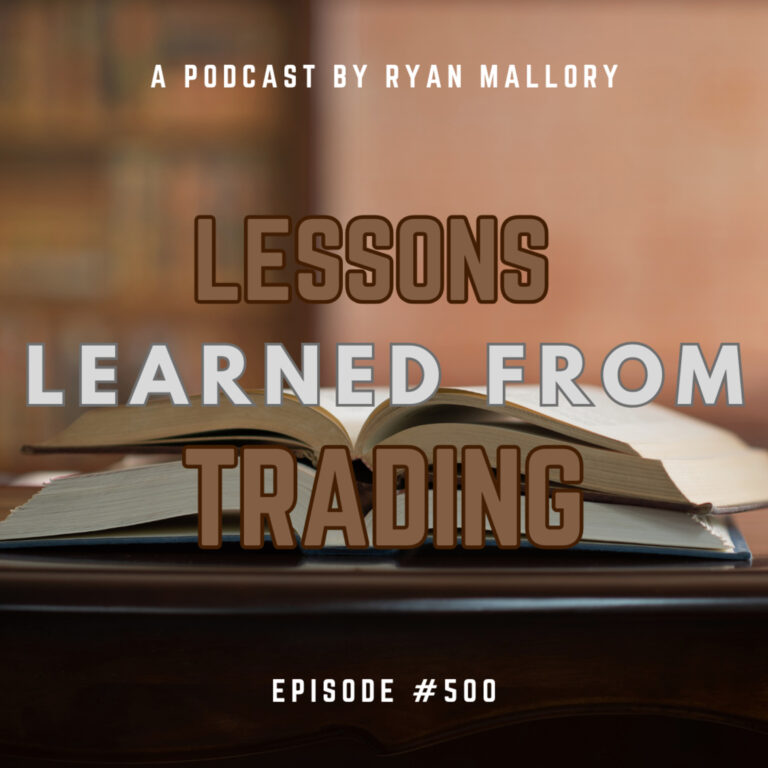Having a set of principles to abide by when trading is critical. I get a lot of emails from traders asking me if I do this or that, and how do I react in “ABC” Scenario and so forth. As a result, I thought it would be helpful to you all, to post my own trading rules. These are rules that I will always follow, though at times I will break one or two of them (because I am human and thus fallible), I always pay for doing so. There are a lot of traders out there, who have no set of trading principles to guide them, and as a result, wonder why they are not successful at trading. So for those especially, who don’t trade by any rules, here are some principles to help guide you.
Of course not all of these rules will apply directly to your style of trading, but I’m sure that you can find one or two that can help and your trading discipline.
Stop-Losses – Whether I’m Long or Short, rich or poor, in sickness or in health, I never trade without having a pre-determined stop-loss; not after I get in the trade, but before I get into the trade. In fact, I look for where to put a stop-loss before I ever determine an entry price.
Profit-Taking – I try not to set targets on any trade I make – previously when I ran a subscription website, I offered target prices, but it was more for those who followed my trading so that they had an idea of the trade’s potential. Personally, I never know what a stock’s true potential is, only that it has the potential to rip me a new one if I don’t have a stop-loss in place (another reference to my first rule). But from time-to-time I will take a profits along the way, but prefer to do so only with half a position. Taking profits on a full position, deprives me of the full potential a stock may have, so I’m better off tightening my stop-loss as my position increases in value.
Risk/Reward – I want to initiate my positions as close to my stop-loss as possible. I try to stay away from positions that require me to put a stop-loss at 10% or more from my designated entry price. Mainly because the capital I can allocate to that position would not be meaningful, and as a result the potential gains would not be favorable. As a result, I want my stop-losses to be no more than somewhere around 3-5%, from my entry price, while preferring something around 1-2%. Now some might say that I’m not giving myself enough wiggle room and that it will lead to a lot of positions being prematurely stopped-out, but I would recon that if I aimed for stops in the range of 10%, that my win/loss ratio would probably be about the same as the stop-losses I currently use now of 1-2%. The difference being with small stops, I can put more capital to work, and thus realize bigger gains.
Position Sizing – A lot of traders like to use a predetermined dollar amount and apply that amount to every trade they make; for others, they like to commit “X” amount of shares to every trade regardless of share price. The short-coming in both of these approaches is that you’re not managing risk as well as you should be. Instead I determine ahead of time, how much of my capital I am willing to lose on a given trade – if it is 1% of my overall portfolio value, then I will buy as many shares of “XYZ” stock that I can without going over my pre-determined dollar-risk level (in this case 1% of my portfolio value). In some cases, I might allocate 10% of my portfolio to a trade, in other cases, if I have a fairly wide stop-loss then it the amount of capital that I commit to the position will be far less.
The Edge –I’m no fortune teller, much less, even a person who has an uncanny ability to predict market direction with relative ease. I fully respect the unpredictable nature of the market and its ability to run contrary to everything I think and expect. With that said, I do conduct market analysis on a daily basis, and do so with the mindset of trying to find an edge. I don’t look for near-certain setups or zero-risk scenarios, because they don’t exist. Instead, I think in probabilities, and in conducting research, I look for a probability edge where I can say there is an expectation that the market will go down/up based on “XYZ”. Then I look for a stock that lines up with my general belief in the market, and thus provides me a technical edge too. I also will look for those industries that are strong (in bull markets) and weak (in bear markets), which provides me with another edge. I want an edge when I trade, not so that I can guarantee a win, but so that I can put myself in a position as much as possible to profit from the stock market (assuming that I follow my other rules too).
Mental Composition – I lose a lot as a trader, I expect to lose, in fact, how well I lose often determines how well I win. If I get emotional about losing, can’t handle the stress of seeing “RED” on a trade, or being disappointed about a trade I thought for was a “sure-thing”, then I have no business being a trader. Traders lose money, its what we do. But we also make money, and being disciplined with each and every trade, one can make lots of it. Trading stocks, whether I am winning or losing, has to become as regimented as “pulling a lever”. If it is not, then I must pull myself out of the game, until my mind is not longer impacted by emotions of the trade.
Market Opening – Experience has taught me to avoid the first 30 minutes of trading each day, at all costs. This is the time of day where you can inflict some serious damage on your portfolio. The first 30 minutes is essentially “Amateur Hour” – it is for those who believe the sky is falling, or the market is rallying without them, or those who got a random fax from some dude in Nigeria telling them to put a market order on some illiquid stock that no one has ever heard of. I prefer regardless of the opportunity to let the market calm down in the mornings, and will wait as much as an hour at times, before putting on a position.
Support/Resistance/Trendlines –These are the three things I primarily look for in a stop-loss. I don’t use fancy indicators, or a proprietary oscillator to determine where I place my stops. Instead I solely use price. If I am long, I am going to look to place a stop-loss somewhere underneath a critical support level, and if I am short, then I am going to place a stop just above an area of resistance.
Trendlines are also nice to use, as a break of the trendline usually means there is a change in sentiment, and you best better relieve yourself of any vulnerable positions you might still have on.
Market Trends are your Friends – of course until the end when there’s a bend. I’m not the author of that saying, and I’m not sure who is, but there is a lot of truth to it. As mentioned earlier about trading with a market edge, it is important for me to remember to not try and buck a trend in hopes of timing the top or the bottom. Instead.I trade with the market, and when the tide does actually change, then I trade with the new trend in place. It sounds overly simplistic, but the concept itself is hard to grasp, because often times I catch myself wanting to outsmart Mr. Market – and when that happens rarely do I find victory.

Welcome to Swing Trading the Stock Market Podcast!
I want you to become a better trader, and you know what? You absolutely can!
Commit these three rules to memory and to your trading:
#1: Manage the RISK ALWAYS!
#2: Keep the Losses Small
#3: Do #1 & #2 and the profits will take care of themselves.
That’s right, successful swing-trading is about managing the risk, and with Swing Trading the Stock Market podcast, I encourage you to email me (ryan@shareplanner.com) your questions, and there’s a good chance I’ll make a future podcast out of your stock market related question.
In today's episode, at episode 500, I am diving into the lessons learned from trading over the last 100 episodes, because as traders we are evolving and always attempting to improve our skillset. So here is to episode 500, and to another 500 episodes of learning and developing as swing traders in the stock market!
Be sure to check out my Swing-Trading offering through SharePlanner that goes hand-in-hand with my podcast, offering all of the research, charts and technical analysis on the stock market and individual stocks, not to mention my personal watch-lists, reviews and regular updates on the most popular stocks, including the all-important big tech stocks. Check it out now at: https://www.shareplanner.com/premium-plans
📈 START SWING-TRADING WITH ME! 📈
Click here to subscribe: https://shareplanner.com/tradingblock
— — — — — — — — —
💻 STOCK MARKET TRAINING COURSES 💻
Click here for all of my training courses: https://www.shareplanner.com/trading-academy
– The A-Z of the Self-Made Trader –https://www.shareplanner.com/the-a-z-of-the-self-made-trader
– The Winning Watch-List — https://www.shareplanner.com/winning-watchlist
– Patterns to Profits — https://www.shareplanner.com/patterns-to-profits
– Get 1-on-1 Coaching — https://www.shareplanner.com/coaching
— — — — — — — — —
❤️ SUBSCRIBE TO MY YOUTUBE CHANNEL 📺
Click here to subscribe: https://www.youtube.com/shareplanner?sub_confirmation=1
🎧 LISTEN TO MY PODCAST 🎵
Click here to listen to my podcast: https://open.spotify.com/show/5Nn7MhTB9HJSyQ0C6bMKXI
— — — — — — — — —
💰 FREE RESOURCES 💰
— — — — — — — — —
🛠 TOOLS OF THE TRADE 🛠
Software I use (TC2000): https://bit.ly/2HBdnBm
— — — — — — — — —
📱 FOLLOW SHAREPLANNER ON SOCIAL MEDIA 📱
*Disclaimer: Ryan Mallory is not a financial adviser and this podcast is for entertainment purposes only. Consult your financial adviser before making any decisions.




